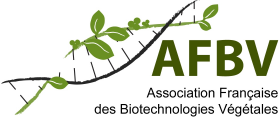In September 2022 EFSA published an updated scientific opinion on plants developed by cisgenesis and intragenesis entitled: « Updated scientific opinion on plants developed through cisgenesis and intragenesis » (doi: 10.2903/j.efsa.2022.7621). This scientific opinion complemented the October 2020 scientific opinion entitled: «Applicability of the EFSA Opinion on site-directed nucleases type 3 for the safety assessment of plants developed using site-directed nucleases type 1 and 2 and oligonucleotide directed mutagenesis » (doi:10.2903/j.efsa.2020.6299). In the Spring of 2022 EFSA had also been asked by the EU Commission to describe what risk assessment criteria would be required for plants resulting from targeted mutagenesis, cisgenesis and intragenesis. In mid-October 2022 EFSA issued a statement in response describing several criteria to be used in the risk assessment of such plants, including a decision-tree: « Criteria for risk assessment of plants produced by targeted mutagenesis, cisgenesis and intragenesis » (doi: 10.2903/j.efsa.2022.7618).
AFBV and WGG do not share EFSA’s apparent recommendation that a mandatory risk assessment step is necessary for all plants obtained by targeted mutagenesis, cisgenesis and intragenesis. If adopted such recommendation would constitute a major obstacle for the development in Europe of plants derived from targeted mutagenesis and cisgenesis.
Various analyses and evaluations of these technologies undertaken by the French High Council of Biotechnologies (HCB), EFSA and the Scientific Advice Mechanism in Europe have concluded that plants developed with the use of such technologies are no different in their effects on health or the environment from those obtained from traditional breeding methods. Also, several scientific opinions from EFSA on SDN-1, SDN-2 and ODM technologies and on cisgenesis and intragenesis confirmed the absence of specific risks in comparison with traditional breeding methods. Accordingly WGG and AFBV have recommended* that four categories of edited or cisgenic plants be excluded from the GMO regulatory framework by using the exemption mechanism previously used in Article 3 (1) of Directive 2001/18/EC (Annex I B). In addition, we have proposed a simple verification process to permit a competent authority to confirm the excluded status of such edited or cisgenic plants.
To facilitate understanding of the AFBV-WGG proposed excluded categories, we have presented them in Annex 1 below in the form of a decision tree analogous to the EFSA decision tree. To establish this tree, we have used criteria similar to those proposed by EFSA and additional ones to identify more precisely the proposed categories of excluded plants. These new criteria take into account the conventional breeding practices that we initially used to establish the four excluded categories.
The AFBV-WGG Decision Tree leads to three levels of regulation:
- Four categories of cisgenic plants or plants derived from targeted mutagenesis (edited plants) to be excluded from the scope of GMO legislation (AFBV/WGG proposal), based on the same exemption mechanism as Annex IB and treated as conventional plants;
- Intragenic, cisgenic or edited plants which should undergo a proportionate evaluation tailored to the characteristics of the modified plant, using adjusted guidelines and with a regulatory status to be determined. As proposed in our Explanatory Note and Draft Amendment, regular periodic reviews should be carried out to consider new categories of excluded plants, taking into account scientific and technical progress and experience gained from proportionate evaluations;
- Transgenic plants subject to current GMO legislation.
The other elements of our proposal remain unchanged (see details in Explanatory Note and Draft Amendments), in particular:
- The inclusion of a plant in a category must be confirmed following a request from the developer to a competent authority;
- The establishment of a database of confirmed cisgenic or edited plants;
- Excluded plants shall be subject to seed and plant variety regulations applicable to relevant crop species in the same manner as any variety obtained through traditional breeding techniques;
- Exclusion of null segregants from the scope of GMO legislation.
* See 2022 Updated Explanatory Note and Draft Amendment
Annex 1: AFBV-WGG Decision Tree and criteria used
Definitions used herein are the same as those used in EFSA’S Decision Tree. However, since our Tree also considers plants which are not used in breeding, we prefer to use the terminology “Species Gene Pool”1 instead of “Breeders’ Gene Pool”, as defined in the footnote below. Criteria to be used are the following:
- Criterion C1: Is an exogenous DNA sequence present in the final plant? If the answer is no, then it is an edited plant (see analysis from criterion C7). If the answer is positive, see criterion C2.
- Criterion C2: Is the exogenous DNA sequence present in the Species’ Gene Pool (SPG) of the final plant? If the answer is no, then we have a transgenic plant. We do not deal here with transgenic plants, which are not the subject of the current policy action. If the answer is yes, the analysis continues with the following two criteria: C3a and C3b.
- Criterion C3a: If the integrated sequence has been rearranged (intragene) the result is an intragenic plant. While we do not deal here with intragenic plants, they should undergo a proportionate evaluation tailored to the characteristics of the modified plant, using adjusted guidelines and with a regulatory status to be determined.
- Criterion C3b: If the integrated sequence corresponds to an exact copy (cisgene), we obtain a cisgenic plant. We continue the analysis of these plants by considering the type of integration of the cisgene.
- Criterion C4: This integration can be done randomly (C4a) or in a targeted way (C4b).
- Criterion C4a: If the integration is random, the site of integration of the cisgene is analysed to determine if there is (C5a), or not (C5b), an involuntary interruption of a gene:
- In the case of an involuntary interruption of a gene (C5a), a proportionate evaluation tailored to the characteristics of the modified plant should be carried out, using adjusted guidelines and with a regulatory status to be determined;
- If there is no unintended interruption of a gene (C5b), the resulting plant falls into Category 4 of our proposal. This cisgene is then either an additional copy of the homologous gene present in the genome of the edited plant (C6a) or a new gene present in the SGP of the final plant (C6b).
- Criterion C4b: If the integration is done in a targeted manner and the cisgene is integrated as a replacement for the homologous gene (C6c) the plant falls into Category 1. In the case where the cisgene contributes either an additional copy of the homologous gene already present in the genome of the edited plant (C6a) or a new gene present in the SGP (C6b), the plant falls into Category 4.
Edited plants
- Criterion C7: We consider the origin of the allele that served as a model for editing. There are two cases depending on its presence (C7a) or absence (C7b) in the SGP of the edited plant. If it is present in the SGP of the edited plant, the edited plant falls into Category 1. If it is absent from the SGP of the edited plant we consider other criteria below.
- Criteria C8a and C8b: Is the edited allele present in an another SGP, different from the SGP containing the edited plant? If the answer is positive (C8a), then one should consider whether this other SGP is used in a breeding programme (C9). If it comes from another SGP used in a breeding programme (C9a), the edited plant is in Category 2. If not (C9b) the edited plant is classified in Category 3.
- Criterion 10: The edited plant has a novel allele compared to the SGP of which it is a part. Could the allele be obtained by spontaneous or induced random mutagenesis? If the answer is positive (C10a) the resulting plant will be in Category 3. If the answer is negative (C10b), a proportionate evaluation tailored to the characteristics should be carried out for the modified plant, using adjusted guidelines and with a regulatory status to be determined.
1Species’ Gene Pool: the sources of genes/alleles available are referred to as the “species’ gene pool”. In a given species one can distinguish between primary, secondary and tertiary gene pools. Each primary gene pool comprises several taxonomic species which can interbreed freely. The secondary gene pool includes species that can be cross-bred only with difficulty with a member of the primary gene pool but which produce at least some fertile hybrids. The tertiary gene pool comprises those species that are more distantly related to a member of the primary gene pool but which can be crossbred only using advanced techniques such as embryo rescue, induced polyploidy and bridge crosses. In a species the tertiary gene pool is continually expanding and will continue to do so in the future.

Download the AFBV-WGG Decision Tree and criteria used









